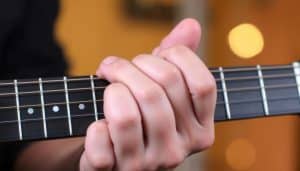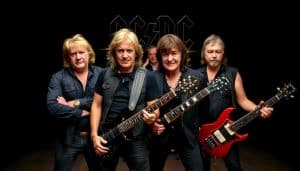If you’re a guitar enthusiast or a professional musician looking to elevate your sound, then look no further! This article is here to serve as your ultimate guide to the best guitar effects pedals available in the market. From distortion and overdrive to delay and reverb, we’ll take you on a journey to explore these remarkable devices that can transform your music into something extraordinary. Whether you’re a beginner or a seasoned player, we’ll break down the essential features, provide expert recommendations, and help you find the perfect guitar effects pedals to add that extra magic to your performance. Get ready to take your guitar playing to the next level!

1. What are Guitar Effects Pedals?
1.1 Understanding the Basics
Guitar effects pedals are devices that alter the sound of an electric guitar. They are used to create a wide variety of tones and effects that can enhance the musician’s playing and add depth and texture to their sound. These pedals work by modifying the signal from the guitar before it is sent to an amplifier or other audio device.
1.2 Common Types of Guitar Effects Pedals
There are many different types of guitar effects pedals available on the market. Some of the most common ones include:
- Overdrive and Distortion Pedals: These pedals are used to add grit and distortion to the guitar’s signal, creating a range of tones from smooth overdrive to heavy distortion.
- Delay and Reverb Pedals: Delay pedals add echo and space to the guitar’s sound, while reverb pedals create the illusion of playing in a large room or hall.
- Modulation Pedals: Modulation effects include chorus, flanger, and phaser pedals, which add movement and texture to the sound by altering the pitch, time, or amplitude of the guitar’s signal.
- Wah and Filter Pedals: Wah pedals create a distinctive sweeping effect, while filter pedals modify the frequency response of the guitar’s signal, creating unique tonal variations.
- Compression Pedals: Compression pedals even out the dynamics of the guitar’s signal, resulting in a smoother, more balanced sound.
- Multi-Effects Pedals: These pedals combine multiple effects into one unit, offering flexibility and convenience for musicians who want a variety of effects in a single pedal.
- Loopers and Samplers: Loopers allow musicians to record and play back loops of guitar phrases, while samplers enable the manipulation and playback of pre-recorded samples.
2. Factors to Consider When Buying Guitar Effects Pedals
2.1 Budget
Before purchasing guitar effects pedals, it’s important to determine your budget. Pedals can range in price from affordable to quite expensive, so it’s essential to set a budget that aligns with your financial resources. It’s also worth considering whether you want to gradually build your pedalboard over time or invest in a multi-effects pedal that combines multiple effects in one unit.
2.2 Pedal Types
Consider what type of effects you want to achieve with your guitar. Each type of pedal mentioned earlier offers its own unique sound and characteristics. Think about the genres of music you play and the specific effects that will enhance your playing style and the sound you want to create.
2.3 Effect Chain and Signal Flow
Understanding the effect chain and signal flow is crucial when building a pedalboard. Different effects pedals can interact with each other in unique ways, and the order in which they are connected can greatly affect the final sound. Experimenting with different pedal orders can help you achieve the desired tone and ensure that each effect is utilized effectively.
2.4 Analog vs. Digital
Another factor to consider is whether you prefer analog or digital pedals. Analog pedals tend to have a warmer and more organic sound, while digital pedals often offer more flexibility and a wider range of effects. It’s a matter of personal preference and the specific sound you’re aiming for.
2.5 Brand and Reputation
Researching and considering the reputation of the pedal brand is important when making a purchase. Some brands are known for their high-quality craftsmanship and reliability, while others may have a reputation for producing more budget-friendly options. Checking reviews and seeking recommendations from fellow musicians can help guide you in choosing a reputable brand.

3. Overdrive and Distortion Pedals
3.1 Exploring Overdrive and Distortion
Overdrive and distortion pedals are widely used in guitar playing, particularly in rock and metal genres. Overdrive pedals are designed to mimic the natural distortion that occurs when a tube amplifier is pushed to its limits, resulting in a warm and smooth overdriven tone. Distortion pedals, on the other hand, produce heavier and more aggressive tones that are characterized by their high-gain sound.
3.2 Top Overdrive Pedals
There are several top-rated overdrive pedals on the market. Some popular choices include the Ibanez Tube Screamer, the Fulltone OCD, and the Boss BD-2 Blues Driver. These pedals are known for their versatility, reliability, and ability to enhance the natural sound of the guitar without overpowering it.
3.3 Top Distortion Pedals
When it comes to distortion pedals, the market offers a wide range of options. Some highly regarded distortion pedals include the Pro Co RAT, the Boss DS-1, and the Electro-Harmonix Big Muff Pi. These pedals are loved by musicians for their ability to create heavy and aggressive tones, perfect for genres like metal and hard rock.
3.4 Differences Between Overdrive and Distortion
While overdrive and distortion pedals both alter the guitar’s signal to create a distorted tone, there are some notable differences between the two effects. Overdrive pedals produce a smoother and more natural sound, replicating the warm and dynamic characteristics of a cranked tube amplifier. In contrast, distortion pedals deliver a more aggressive and high-gain sound, often associated with heavier genres of music.
4. Delay and Reverb Pedals
4.1 Understanding Delay and Reverb Effects
Delay and reverb pedals are essential tools for adding depth and ambience to your guitar sound. Delay effects create echoes that repeat after the original signal, while reverb effects simulate the natural reverberation that occurs in different acoustic spaces.
4.2 Top Delay Pedals
Some popular delay pedals include the Boss DD-7 Digital Delay, the Strymon Timeline, and the TC Electronic Flashback 2. These pedals offer various delay settings and features, allowing musicians to experiment with different delay times, feedback amounts, and modulation effects.
4.3 Top Reverb Pedals
When it comes to reverb pedals, the Strymon BigSky, the Electro-Harmonix Holy Grail, and the EarthQuaker Devices Afterneath are highly regarded options. These pedals provide a range of reverb sounds, from subtle and natural room reverbs to massive, atmospheric textures.
4.4 Differences Between Delay and Reverb
While both delay and reverb contribute to the overall spaciousness and depth of a guitar’s sound, there are notable differences between the two effects. Delay creates distinct echoes that can be heard as separate repetitions of the original sound, while reverb produces a continuous, blended repetition that adds a sense of space and decay to the sound. In simpler terms, delay is like hearing multiple identical copies of a sound, while reverb is like hearing the sound bounce around a room.

5. Modulation Pedals
5.1 Exploring Modulation Effects
Modulation effects pedals are used to alter the guitar’s signal by manipulating various aspects of the sound, such as pitch, time, and amplitude. These effects can add movement and texture to the guitar’s sound, allowing for more creative and experimental playing.
5.2 Top Chorus Pedals
Some highly recommended chorus pedals include the MXR M234 Analog Chorus, the Boss CE-2W Waza Craft Chorus, and the Electro-Harmonix Small Clone. Chorus effects create a lush and shimmering sound by duplicating the guitar’s signal, altering the pitch ever so slightly, and modulating the delay time.
5.3 Top Flanger Pedals
Flanger pedals, such as the Electro-Harmonix Electric Mistress, the MXR M117R Flanger, and the Strymon Orbit, are excellent choices for musicians looking to achieve a unique and swirling sound. Flanger effects produce a dynamic sweeping effect by mixing the original signal with a slightly delayed and modulated version of itself.
5.4 Top Phaser Pedals
For those seeking a distinctive and psychedelic sound, phaser pedals are a great option. The MXR Phase 90, the Electro-Harmonix Small Stone, and the Boss PH-3 Phase Shifter are among the top-rated phaser pedals. These pedals create a swirling, sweeping sound by splitting the guitar’s signal, modulating the phase relationship between the two paths, and then mixing them back together.
5.5 Differences Between Chorus, Flanger, and Phaser
While chorus, flanger, and phaser pedals are all modulating effects that add movement and texture to the guitar’s sound, there are distinct differences between them. Chorus effects create a shimmering, doubling effect, flanger effects produce a distinct sweeping sound, and phaser effects create a swirling, psychedelic tone. Each effect offers its own unique characteristics and is suited to different musical styles and playing preferences.
6. Wah and Filter Pedals
6.1 Understanding Wah and Filter Effects
Wah and filter pedals are often used to shape the frequency response of the guitar’s signal, creating expressive and unique tones. These pedals can imitate the sound of a human voice or add a funky, resonant quality to the guitar’s sound.
6.2 Top Wah Pedals
Classic wah pedals such as the Dunlop Cry Baby, the VOX V847A Wah, and the Morley 20/20 Power Wah are highly recommended options. These pedals allow you to manually control a bandpass filter, creating a distinctive “wah” sound that can mimic the human voice or add a rhythmic texture to your playing.
6.3 Top Filter Pedals
Filter pedals, like the Electro-Harmonix Q-Tron, the Moog MF-101 Lowpass Filter, and the 3Leaf Audio Proton V2 Envelope Filter, are favored by musicians looking for funky and expressive tones. These pedals employ various filtering techniques to modify the frequency content of the guitar’s signal, resulting in unique and dynamic sounds.
6.4 Differences Between Wah and Filter Pedals
While both wah and filter pedals shape the frequency response of the guitar’s signal, there are key differences between the two effects. Wah pedals are manually controlled by the player’s foot, allowing for real-time control over the filtering effect. Filter pedals, on the other hand, rely on built-in filters and envelope followers to modify the sound automatically. Additionally, wah pedals are primarily associated with the “wah” sound, while filter pedals offer a broader range of filtering effects.

7. Compression Pedals
7.1 Exploring Compression Effects
Compression pedals are often considered essential tools for guitarists, as they help even out the dynamic range of the guitar’s signal. These pedals work by reducing the volume of loud notes and boosting the volume of softer notes, resulting in a more balanced sound.
7.2 Top Compression Pedals
Some popular compression pedals are the MXR Dyna Comp, the Keeley Compressor Plus, and the Wampler Ego Compressor. These pedals provide smooth and transparent compression, allowing for greater sustain and control over the guitar’s dynamics.
7.3 Benefits of Using a Compression Pedal
Using a compression pedal can offer several benefits for guitarists. It can enhance the sustain of notes, reduce the perceived volume difference between loud and soft passages, and add clarity and definition to the guitar’s sound. Compression can also help bring out the subtleties in your playing and provide a more polished and professional sound.
8. Multi-Effects Pedals
8.1 All-in-One Solution
Multi-effects pedals offer a convenient and cost-effective solution for guitarists who want a variety of effects without the need for multiple individual pedals. These pedals typically include a wide range of effects, amp models, and built-in features that allow for easy customization and versatility.
8.2 Pros and Cons of Multi-Effects Pedals
There are several advantages to using multi-effects pedals. They are compact and portable, saving space on your pedalboard and making them ideal for gigs and traveling. Multi-effects pedals also offer a wide range of effects and amp simulations, allowing for a diverse range of sounds. However, some musicians argue that individual pedals often provide better quality and more specific control over each effect. Additionally, the learning curve for navigating and programming multi-effects pedals can be steep for beginners.
8.3 Top Multi-Effects Pedals
Some top-rated multi-effects pedals include the Line 6 Helix, the Boss GT-1000, and the Kemper Profiler. These pedals are known for their high-quality effects, amp emulations, and user-friendly interfaces, making them popular choices among guitarists.

9. Loopers and Samplers
9.1 Looping and Sampling Functions
Loopers and samplers are powerful tools that allow guitarists to layer and manipulate their playing in real-time. Loopers enable the recording and playback of loops, while samplers allow for the manipulation and playback of pre-recorded samples.
9.2 Top Looper Pedals
Some widely used looper pedals include the TC Electronic Ditto, the Boss RC-3 Loop Station, and the Electro-Harmonix 720 Stereo Looper. These pedals offer various recording lengths, overdubbing capabilities, and intuitive interfaces, allowing musicians to create complex and layered compositions on the fly.
9.3 Top Sampler Pedals
While less common than loopers, sampler pedals are still utilized by musicians seeking to incorporate pre-recorded samples into their performances. The Roland SP-404SX, the Korg Volca Sample, and the Elektron Octatrack MKII are highly regarded sampler pedals that offer a wide range of sampling and playback capabilities.
10. Additional Tips for Using Guitar Effects Pedals
10.1 Power and Pedalboard Setup
When using multiple effects pedals, it’s important to consider power supply and pedalboard setup. Some pedals require specific power requirements, such as battery power or dedicated power supplies. Additionally, organizing and arranging the pedals on a pedalboard can help optimize signal flow and make it easier to operate during performances.
10.2 Experimenting with Pedal Order
The order in which the pedals are connected can significantly impact the final sound. Experimenting with different pedal orders can yield interesting and unique tones. As a general rule of thumb, modulation effects are typically placed after drive pedals, while time-based effects like delay and reverb are often placed at the end of the signal chain.
10.3 Using Effects Pedals with Amps
Guitar effects pedals can be used in conjunction with amplifiers to achieve a wide range of tones. It’s important to understand the effects loop and input/output options on your amplifier to effectively integrate your pedals into your setup. Experimenting with different combinations of pedals and amp settings can help you unlock the full potential of your gear.
10.4 Understanding Signal Chain
Understanding the concept of the signal chain is crucial for harnessing the full potential of your guitar effects pedals. The signal chain refers to the order in which your guitar’s signal passes through each effect pedal. It starts with the guitar itself, followed by the pedals, and ends with the amplifier or audio interface. Understanding the signal chain allows you to control the order of effects and to create the desired sound.
10.5 Development of Pedal Skills
A final tip is to invest time in developing your pedal skills. Experiment with different settings, playstyles, and genres to fully explore the capabilities of your guitar effects pedals. Practice switching between pedals seamlessly and explore the nuances of each effect to truly make them an extension of your musical expression.-






